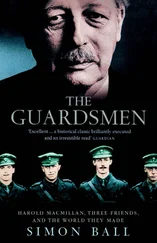The stakes were very high. Plants mattered. The greater the splendour, the finer and rarer the visual and sensual experience they offered, the better. For the first few decades of Kew’s existence, its stock of plants had been the result of donations and exchanges with similar gardens. Many new varieties from all over the world found themselves at Kew by this route but there had not yet been any attempt at a systematic collection in the wild. By the time of the change in Banks’s relationship with the royal garden, however, this had altered dramatically. Kew’s first plant collector was already abroad, and over the following thirty years, he and Banks became very close.
PART I
Between 1777 and 1779 Joseph Banks’s life changed in several important ways that set a pattern for the rest of his days. In 1777, he moved with his sister, Sarah Sophia, into his permanent home in Soho Square. It was a large house with enough space to accommodate his domestic life and his professional interests. His great library focused principally on natural history and its associated texts, manuscripts, drawings and specimens. In 1778, Banks was elected President of the Royal Society after having been a Fellow for just over a decade; he was only thirty-five years old. In 1779, he married Dorothea Huggesen, who moved into Soho Square with him and Sarah Sophia. In the same year, Banks leased and subsequently bought Spring Grove, a property with extensive grounds in Heston, Middlesex. Over time Banks had gardens laid out, and greenhouses and hothouses built. Produce grown there was sent to Soho Square and this was where Banks carried out a number of important horticultural experiments. Banks also began what became an annual pilgrimage to manage his Lincolnshire estates, centred on his country home at Revesby Abbey, where he, his wife and sister would spend every September and October.
In contrast to the English focus of his domestic life in London and Lincolnshire, Banks was being drawn in other, more outward-looking and global directions. In 1776, Francis Masson, Kew’s first official collector since 1772, became Banks’s direct responsibility. Masson had already been to the Cape of Good Hope collecting for the royal gardens at Kew, and he was on his way to Madeira to continue his assignment when Banks took over his direction. During the next three decades, while Masson travelled through the Atlantic region, Banks handled all his preparations, telling him where and what to collect, arranging his finances and managing the receipt of his specimens for Kew.
Banks, already a wealthy man, now settled down as a county notable and the President of the Royal Society. His contact with Masson offered Banks something entirely different, something unpredictable that must have reminded him of his experiences on the Endeavour . Banks could share vicariously in the excitement of finding new plants to send to Kew, of making Kew a place where plants from all over the globe could thrive, far from their native habitats. It gave Banks, as he said himself, the greatest of pleasures, to harness the intellectual resources of Soho Square, its library and herbarium, to the practical horticultural experience and knowledge of Kew, all for the benefit of the King and his garden. Banks would continue pushing these projects into new geographic regions, whenever the opportunities arose.
These early collectors, including Masson, were mostly Scots – they were generally better trained and more knowledgeable about botany than their English counterparts. Most of these men sought out Banks rather than the other way round. They expanded their own and Banks’s geographical horizon, collecting plants in parts of the world – the Pacific Northwest, China, southwest Africa and the Coromandel Coast – whose botany was hardly known in Europe.
1
1772: Masson Roams the Atlantic
Joseph Banks did not choose his first collector himself. Francis Masson had been appointed as Kew Garden’s first plant collector by Sir John Pringle. Sir John had been a close friend of the royal family even before 1764 when he was made Physician in Ordinary to Queen Charlotte. Liked and trusted by the King, he had replaced the Earl of Bute as adviser to the royal garden at Kew. Though, as he admitted, ‘I myself am so little a Botanist’, he was very well connected in cosmopolitan scientific circles, and would have acted as the King’s agent in selecting Masson, no doubt taking the advice of the head gardener at Kew, William Aiton.[1]
Masson had been working under Aiton, as a gardener at Kew, and had made a good impression. He was a fellow Scot, born in Aberdeen in 1741, but little is known about his life before Kew.[2] Although Banks took no credit for selecting Masson, saying Pringle did it all, he does seem to have had a hand in deciding where he was sent.[3] According to Masson, writing in 1796, it was Banks who ‘suggested to his Majesty the idea of sending a person, professionally a gardener, to the Cape’.[4]
Aside from recommending the destination, it’s unlikely Banks had anything to do with any instructions for Masson. Banks was busy planning a second voyage to the Pacific with Cook. This, and the intense pressure of classifying the huge botanical collection from the first voyage, and preparing the botanical drawings made on the Endeavour , took up most of his time.[5]
The choice of the Cape as the destination for Kew’s first plant collector, may not seem obvious; it was under Dutch rule for one thing. However, other circumstances did recommend it. Banks and Solander had spent some time there, from 14 March to 16 April in 1771, when the Endeavour made its last substantial stop before returning to England.[6] The plant collecting had not been as productive as they had expected, because, for almost half their stay, Solander had been confined to bed suffering from a fever. Referring to what possible botanical treasures might be found beyond the port, Banks commented ‘I can say but little … not having had an opportunity of making even one excursion owing in great measure to Dr Solanders illness.’[7] Even so, in the vicinity of the ship’s anchorage, they managed to collect more than three hundred varieties of plants, including a gardenia, an acacia and a heather.[8]
Observing the plants being cultivated by Dutch farmers in the fields around, and in the Dutch East India Company’s botanic garden, Banks concluded that though the climate was milder than that of England, the food crops, at least, were pretty much the same. This would have led him to conclude that the Cape area might be ideal for collecting plants that would be easy to grow at Kew, unlike the tropical plants that needed a protective habitat and artificial heat.
This observation would have been confirmed by the fact that Kew was already growing plants from the Cape, many of which had been introduced to the garden in the 1730s by Philip Miller, head gardener of the Chelsea Physic Garden.[9] Not only had there been these living plants for Masson to see but Hans Sloane’s herbarium was then at the British Museum, which contained an impressive collection of Cape plants that had come into Sloane’s possession from other collections and collectors.[10] Also, since the early years of the seventeenth century, Cape plants figured in specialised texts, such as the famous Hortus Cliffortianus , compiled by Linnaeus, and many of these publications were at the British Museum or in Banks’s home.[11]
These factors alone recommended the Cape as a collecting destination but also important was the fact that maritime contact between it and Europe was excellent. Table Bay, the Cape’s harbour, was always full of foreign ships, primarily from the Dutch, Swedish and English East India Companies either heading into or returning from the Indian Ocean.[12] When the Endeavour arrived in Table Bay on 14 March 1770, Cook noted that there were already sixteen ships at anchor; over the following month he reported that four British East India Company and seven Dutch East India Company ships left for Europe.[13] With so many ships bound for Europe and with a sailing time of less than three months, living plants would have their best chance of survival at sea if shipped from the Cape.
Читать дальше












